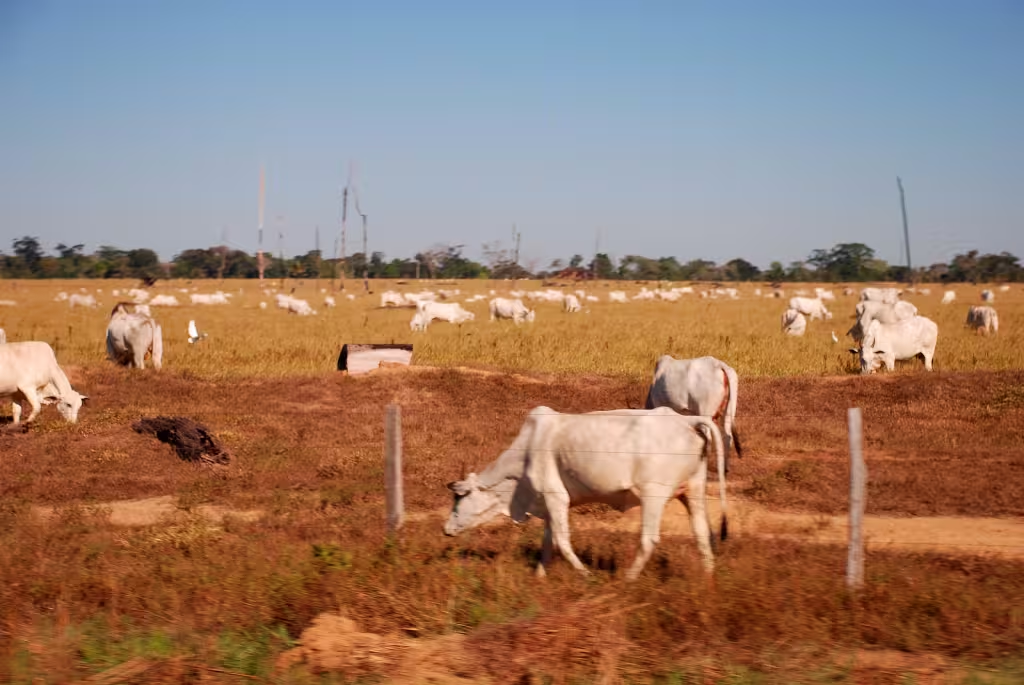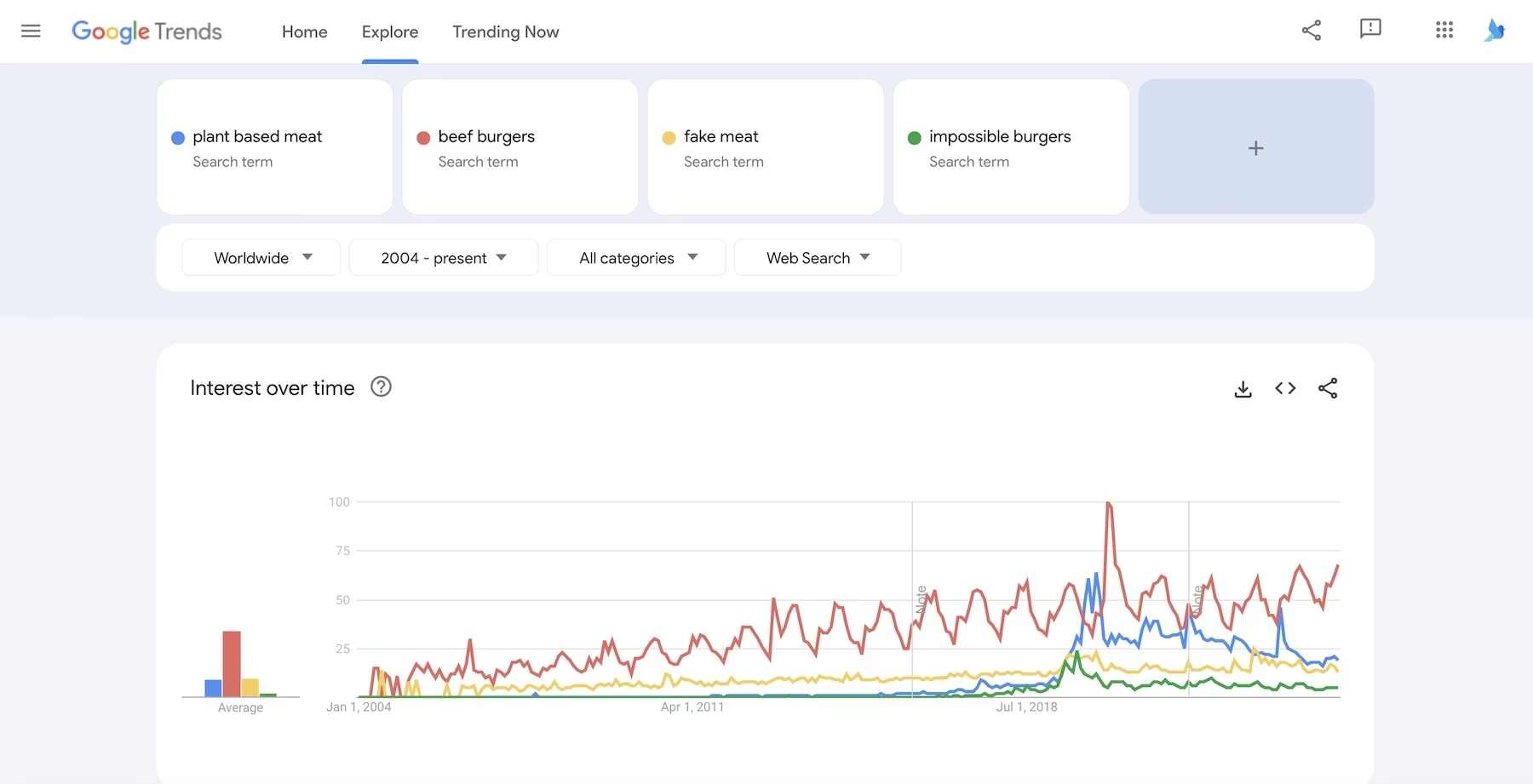The food industry has seen a surge in the popularity of plant-based meat alternatives, of late. These products, designed to copy the taste and texture of traditional meat, are swaggering on supermarket shelves and zeitgeisty menus. But what on earth are plant-based meats and how do they stack up against the classic cuts? This blog post takes an enthusiastic bite into these questions to find some satisfying answers.
What is plant-based meat?
Plant-based meat, also known as meat analogues or meat substitutes, are food products designed to ape animal meat. They are typically made from plant-based protein sources such as soybeans, peas, rice, or wheat, and often include other ingredients like vegetable oils, flavorings, and colorings to achieve a meat-like experience. Sometimes, wild innovations like 3D printing may be applied.

You could say that ‘plant-based’ meat is a misleading term as alternatives to meat can also be made from other building blocks that aren’t technically plants but are also plentiful sources of protein – like fungi, or even seaweeds.
What is ‘real’ meat!?
This one’s easier: ‘real’ meat, or you could say conventional meat, refers to the flesh of animals that are raised and slaughtered for human consumption. This includes beef, pork, lamb, poultry, and other animal meats. Meat has been a staple in human diets for centuries but is becoming more questionable today.
Now let’s take a look at how plant-based meat compares across six key areas:
1. Environment
One of the most pressing concerns surrounding animal meat production is its environmental impact. Raising livestock for meat consumption requires vast amounts of land, water, and feed, resulting in damaging deforestation, greenhouse gas emissions, and water pollution.

Plant-based meat has an unquestionably lower environmental footprint compared to conventional meat. On this front, it’s not even close. Studies have repeatedly shown that plant-based meat production requires far less land, water, and energy, and produces fewer greenhouse gas emissions.
The differences are quite stark and also inspiring if you’re thinking of making the switch. Take a recent life cycle assessment from The Good Food Institute that revealed plant-based meat cuts environmental impact by 89%. That’s to add to the benefits of switching to a plant-based diet, which is one of the most impactful single changes an individual can make.
It’s often said that the environmental impact of plant-based meat can vary depending on the specific ingredients and production methods used. Still, that’s a little pedantic and the key point should be that plant-based meat just is more environmentally friendly. By a long way.
2. Taste
Taste is of course a principal factor for many eaters when choosing between plant-based and animal meat. While conventional meat has a trademark flavor and texture that many folk find hard to resist, plant-based pioneers have taken giant leaps in replicating these sensory delights.
Modern plant-based meat products can closely replicate the taste and texture of meat, thanks to mind-boggling advancements in food technology, which are often trademarked. It’s true that people still find differences in taste and texture between plant-based and animal meat. But it’s also true that you can now enjoy plant-based meat that’s almost indistinguishable from the real thing.
A personal story: not that long ago, some members of the Akepa team enjoyed a spectacular burger at Vrutal, a local bar in Barcelona, and can vouch for its tasty simulation of the carnivorous experience. Just look at the thing. It has been destroyed several times since.

More popularly, Burger King also introduced its plant-based Impossible Whopper in 2019 – to rave reviews. In taste tests, many customers couldn’t distinguish between it and a regular Whopper. A reviewer from Delish had to double check her receipt to make sure she hadn’t ordered meat. If you’re interested, its main building block is soy, by the way.
3. Nutrition
Animal meat is a reliable source of protein, iron, vitamin B12, and other nutrients. Flipping that burger over, it can also be high in saturated fat and cholesterol, which may increase the risk of heart disease, and high consumption of red meat has been linked to cancer by some studies.
Plant-based meat can also be a top source of protein but its nutritional content can vary depending on the product and its ingredients. Plant-based meats contain zero dietary cholesterol and are typically lower in saturated fat compared to classic meat but some forms may be higher in sodium or other additives.
It’s also fair to say that plant-based meat needs to be highly processed to closely simulate meat. With that in mind, there are some legitimate concerns over the nutrition and health of plant-based alternatives but some of these are also shepherded into the collective consciousness by the considerable powers of ‘Big Ag’. On that, you might be interested in this hub that was recently put together to debunk some of the misinformation.
All considered, plant-based meat is probably a bit healthier than animal meat. Nevertheless, it’s fair to say that the health-based argument for plant-based meat is weaker than the environmental one. At least for now.
4. Affordability
Many folk expect plant-based meat to be cheaper than animal meat but that’s not the case at all. While the basic raw materials might appear cheaper – the level of R&D and scientific innovation that needs to be in place, means that the fancier products – those that simulate the carnivorous stuff closely – are pricier than what they’re mimicking. It’s a little awkward: like paying for a ticket to see a cover band that’s double the price of a ticket to see the real deal.
Let’s take a real-world example. Impossible is one of the top companies making alternative meat and is also the company that Burger King partnered with to co-create their plant-based Impossible Whopper. Two of their Impossible Burgers are priced at around $10 in the US. While the cost of meaty burgers can vary a lot based on the quality of the meat, two decent quality burgers could cost around half of that.
This story is painfully familiar – take sustainable fashion, for instance, where sustainable garments are way more expensive than fast fashion pieces. A premium is to be expected for better choices but sadly – and a little paradoxically – it brings the whole sustainability into question as sustainable choices shouldn’t be fancy. They should be accessible for everyone for the impact to become real, at scale.
And after all, you can still elect for a plant-based diet that doesn’t rely on deep pockets without going anywhere near simulated meat.
5. Industry Size
The meat industry is a gargantuan global industry, with a well-established infrastructure and mighty supply chain. The plant-based meat industry, while growing, is still tiny in comparison.
To put some figures to that, the global plant-based meat industry is worth around $7 billion and expected to grow rapidly. Those figures might sound impressive but they’re Lilliputian when compared to the conventional meat industry, which is worth over $1.5trillion. That’s an order of magnitude of over 200:1.
Will the plant-based industry catch up or are forecasts ignoring some wolves on the horizon? On one hand, the plant-based meat industry has soared in recent years, driven by increasing interest in health, environmental sustainability, and animal welfare. As technology and production methods improve, the plant-based meat industry should continue expanding. One recent forecast from the imarc, quantifies this expansion at a whopping $100billion by 2033. On the other hand, cost-of-living concerns may threaten the boom. In fact, sales in 2023 did decline, for the second year running, and some major players like Beyond Meat seem to be in financial trouble. So there’s some uncertainty ahead.
That uncertainty is backed when you check search trends, which are quite surprising. Searches for plant-based meat have risen a lot compared to ten years ago but the trajectory has stagnated noticeably over the last few years. Meanwhile, it’s not like searches for real meat are plummeting; they’re often on the rise.

6. Animal Welfare
Apart from the environment and health, ethics is one of the main motives people opt for a plant-based diet.
However you look at it, even in the best-case scenario where an animal lived a magical life (this never happens), slaughtering it for food means ending the life of a creature that we can assume did not want to die to be eaten or worn. With certain types of meat, like lamb or kid, that also means ending that life at a pitifully premature stage.
Plant-based meats – and all plant-based foods – do not contain any animal products so producing them is generally much less harmful to animals. Why not entirely? Sometimes animals can unintentionally get killed in plant production, too.
Still, it takes more crops to feed animals for meat production than to feed people directly with plants. Plant production isn’t just for plant-based products, in fact around 75 to 80% of soy produced is used as farm animal feed. So when it comes to animal welfare, plant-based meats naturally take the throne.
Meat the future
Plant-based and animal meat might have converged in taste but these two are otherwise different beasts. For those who prioritize taste, familiarity and affordability, conventional meat may still be the preferred choice. Yet, we live in disruptive times and for those concerned about the environmental impact of their food choices, or the ethics of animal welfare, plant-based meat is a far more sustainable option.
Still, like a lot of issues related to the environment and sustainability, plant-based meats remain somewhat of an elite novelty for now. For the alternatives to take off, and also make more of an impact by being put on more plates, they need to become more affordable and the industry needs to scale.
Looking to the future, we can expect to see further improvements in taste, texture, and nutritional profile. Not a single month passes without a ridiculous new innovation. This could lead to even greater plating-up of plant-based meat alternatives in the future and the planet would surely be better for it. Meanwhile, at Akepa we’ll see and occasionally dabble in a delicious plant-based burger.



Leave a Reply